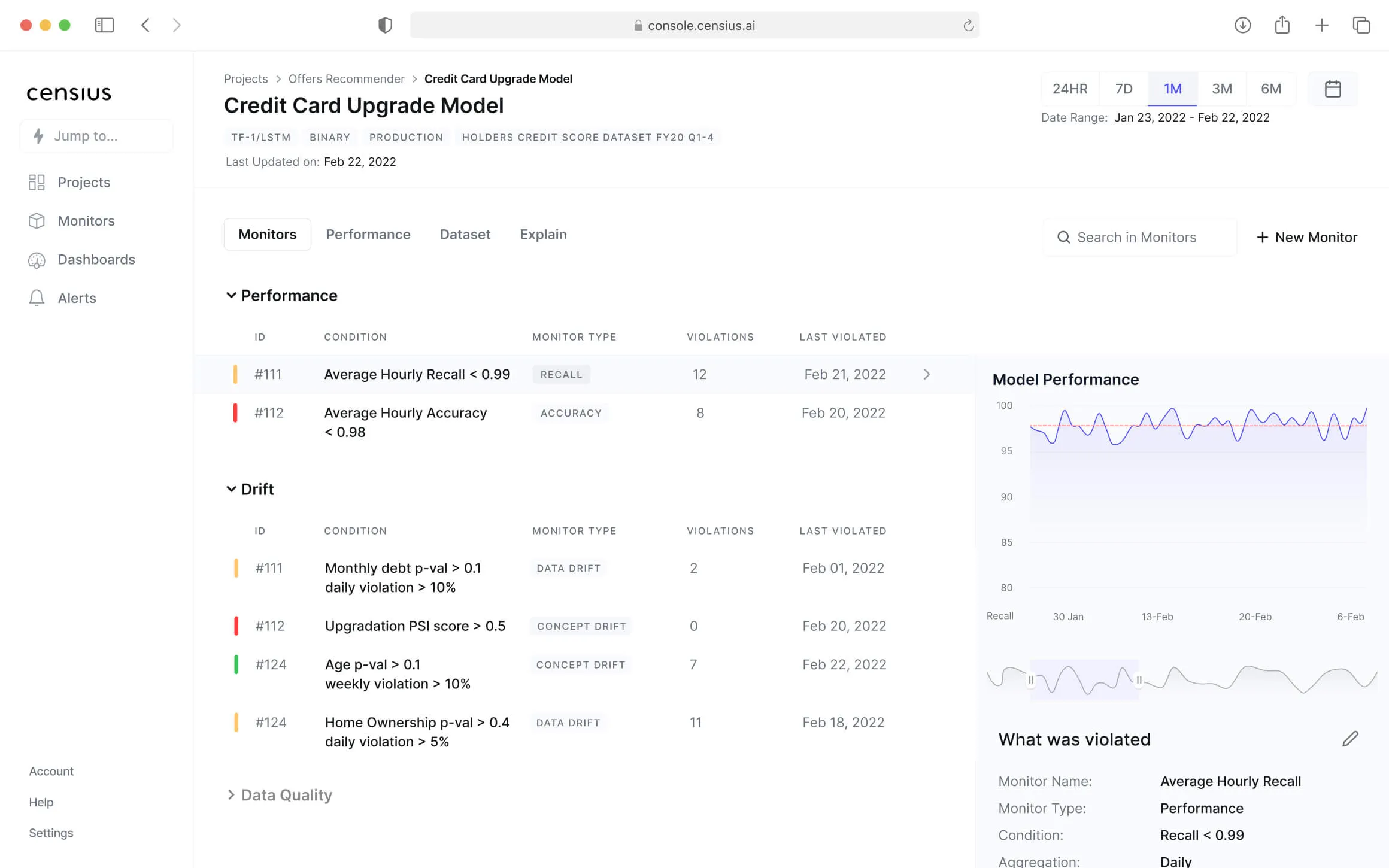State of Large Language Models in Production
Large Language Models (LLMs) continue to ride the waves of popularity in headlines. We can’t deny the privilege of using these massive models to decipher, understand human language, interact, and communicate intuitively with technology. Be it OpenAI’s ChatGPT, Google’s BARD, or Microsoft’s BING, building great things requires continual re-learning, and the same goes for these complex AI models.
LLMs are built on hundreds and billions of parameters to draw relationships between words and respective contexts, and are prone to failure and costly mistakes. Without a choreographer to fine-tune these language models, the outcomes are susceptible to bias, error, privacy, security, and ethical issues. Monitoring is a crucial step to establish clarity and transparency under the hood of your model.
55% of technology leaders experienced AI incidents due to biased or incorrect outputs that resulted in financial losses, measurable loss of brand value, and customer attrition
(Source: McKinsey)
To curb the pitfalls of Generative AI models, our team of experts at Censius has built a Monitoring platform with embedding visualizations. These interactive visuals let you proactively monitor data properties, detect issues, hallucinations, and performance trends of your NLP and Generative AI models to build reliable AI tools. Before we dive into the perks of Monitoring to optimize LLMs, let’s explore the vulnerabilities of these language models and how they may lead to performance degradation if not addressed proactively.
Critical Gaps in LLMs and the Need for Oversight
As we scale up the size and computation power required for these massive models, the model's probability of running into pitfalls increases. Without diligent oversight in LLMs, models are prone to erroneous, inaccurate, or harmful outcomes in high-stakes environments. But turning these challenges into opportunities for growth could be a way to unlock the precision and accuracy that these models were initially built for.
Limitations of Large Language Models:
- Risk of bias: This occurs due to biased information in the training datasets, where a model reflects intrinsic biases, undermining the accuracy and fairness of its outcomes. This can perpetuate harmful societal stereotypes like gender and racial bias. For example, an LLM designed to assist in hiring may discriminate unfairly towards women candidates if the training dataset primarily consisted of men tagged as engineers.
- Risk of hallucinations: Occurs when an LLM generates a non-sensical or inaccurate response that is not based on the training data, often on false assumptions. Since these models cannot perform fact-checking for the provided outcome, the generated responses can be linked to pre-learned patterns. Here’s an instance of a hallucinated response from an LLM:
Source paragraph: The first vaccine for Ebola was approved by the FDA in 2019 in the US, five years after the initial outbreak in 2014. To produce the vaccine, scientists had to sequence the DNA of Ebola, then identify possible vaccines, and finally show successful clinical trials. Scientists say a vaccine for COVID-19 is unlikely to be ready this year, although clinical trials have already started.
Output 1: The first Ebola vaccine was approved in 2021.
☛ This output is hallucinated since it is not in agreement with the source.
- Lack of transparency: The complexity of LLMs often causes businesses to face black-box AI decisions, thereby making it difficult to understand the ‘how’ and ‘why’ behind model outcomes. In the lack of transparency and accountability, stakeholders and users are often in the dark about what’s going on under the hood of the AI model and the reason behind a particular prediction.
Importance Of Monitoring To Build Reliable And Trustworthy Large Language Models
To curb the performance degradation issues in language models, Censius now provides Embedding Visualization tools to monitor LLMs in production, providing data science teams and professionals with the ability to uncover hidden issues, patterns, and insights in unstructured AI models. By leveraging Embedding monitoring in LLMs, you can now:
- Fine-tune and troubleshoot models at scale: Deep dive into model behavior to monitor high-dimensional vectors and detect hallucinations accurately; enable real-time alerts for violations for proactive investigation and issue resolution
- Boost model performance with 3D UMAP visualizations: Proactively detect data quality, drift, and bias issues to maintain and improve the performance of your models to generate accurate responses. Leverage clusters to derive insights, gain access to different types of evaluation scores like ROUGE and filter embeddings for different scores
- Gain deeper insights into data trends that affect model performance: Unstructured data should not mean a heartburn when you need to understand its impact on the model output. The whole array of meta-features drawn from your data can be used for detailed insights and to filter the embeddings visualizations.
- Reduce operational expenditure and focus on what matters most: Quantify ROI per resource and per model and let your ML teams focus on strategic tasks vs. bandwidth-draining tasks like manually troubleshooting models.

The Way Forward
As LLMs continue to boost the global economy, they should not come at the expense of propagating biases and unethical use of AI. To fine-tune your language models, supervision isn’t just a responsibility—it’s a necessity.
Sharpening the wits of your language model for better performance and accuracy can be made easy with diligent monitoring. At Censius, we are dedicated to enabling practitioners and businesses alike to curb the risks of LLMs and build reliable, safe, and transparent AI tools.
Get Started with your LLM Monitoring Journey
Curious to learn more about Censius’ LLM Monitoring platform? Get in touch with our team of experts and gain early access to our latest Embedding Visualization tool!

Explore how Censius helps you monitor, analyze and explain your ML models
Explore Platform.png)
